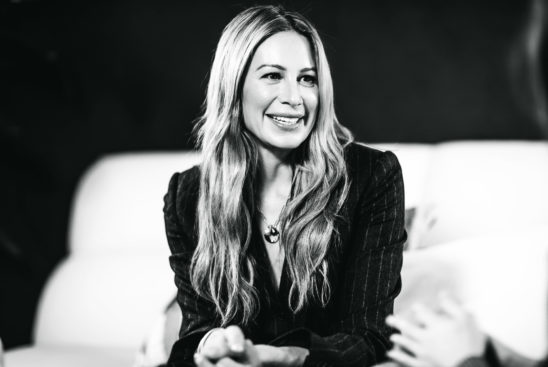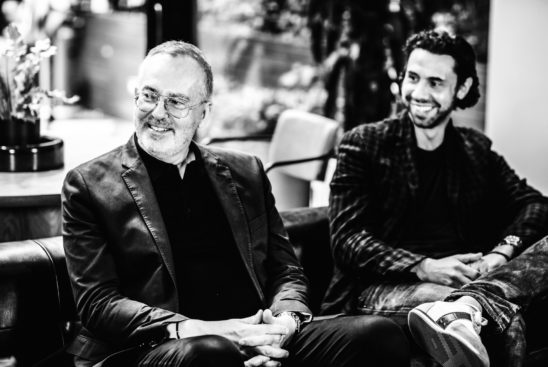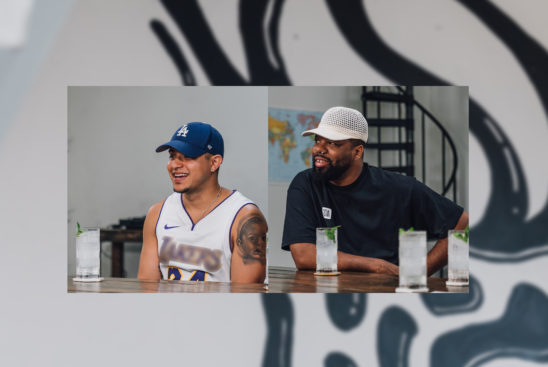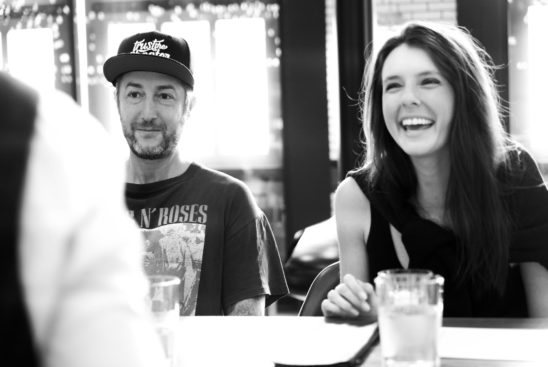Thanks for having us in your New York office! You connected CB2 to the finest dealers, shops and galleries around the world and scouted Europe for a one-of-a-kind collection of rare vintage. What was the process of pulling off a collection like this?
The process that CB2 and I collaboratively developed is in a way an extension of my process that I use in my design practice. I’m constantly moving, looking and scouting for unique, interesting pieces that may be valuable and collectable or just might be funky and cool. When CB2 came to me with this open-ended concept to bring vintage into their store assortments, I put together a mood board along the lines of those [here in my office] that represented what I thought would fit into their program conceptually. With the green light from them, I went out into the market and began searching for things that fell within those parameters of material, style, period and origin. And then I took the team to Europe to review and approve a prototype mockup installation of what a vintage installation in one of their stores would look like.
How long were you traveling and searching for these items?
What made it easy were the dealer partners I selected to work with. Taking it all on as a small office based in New York, buying hundreds of pieces on behalf of a large corporation is outside the scope of what I could handle. I partnered CB2 with dealers I work with regularly who have the infrastructure and the capabilities to source, refinish, reupholster, pack and ship. This collection is both a collaboration between myself and CB2 and my dealers, myself and CB2. In other words, there wasn’t that much work on the ground. We had great people representing us in the marketplace. I spent some time in Germany and then I took [the CB2 team] to Milan and to Maastricht, which is this town outside of Amsterdam. We met the partners, had meals with the partners, reviewed all the furniture we had put on hold for the collection and everybody loved it. It was a wonderful experience. It added that personal connection … The beauty, value and proposition of vintage is that physical engagement with the furniture piece and its history. [That’s] all evident in the texture, in the patina [an elegant catch-all word that references the wear, age and use of a piece] and it’s not until you see and experience that that you really connect with the object. That’s something we hope we bring to the CB2 customer through the stores.
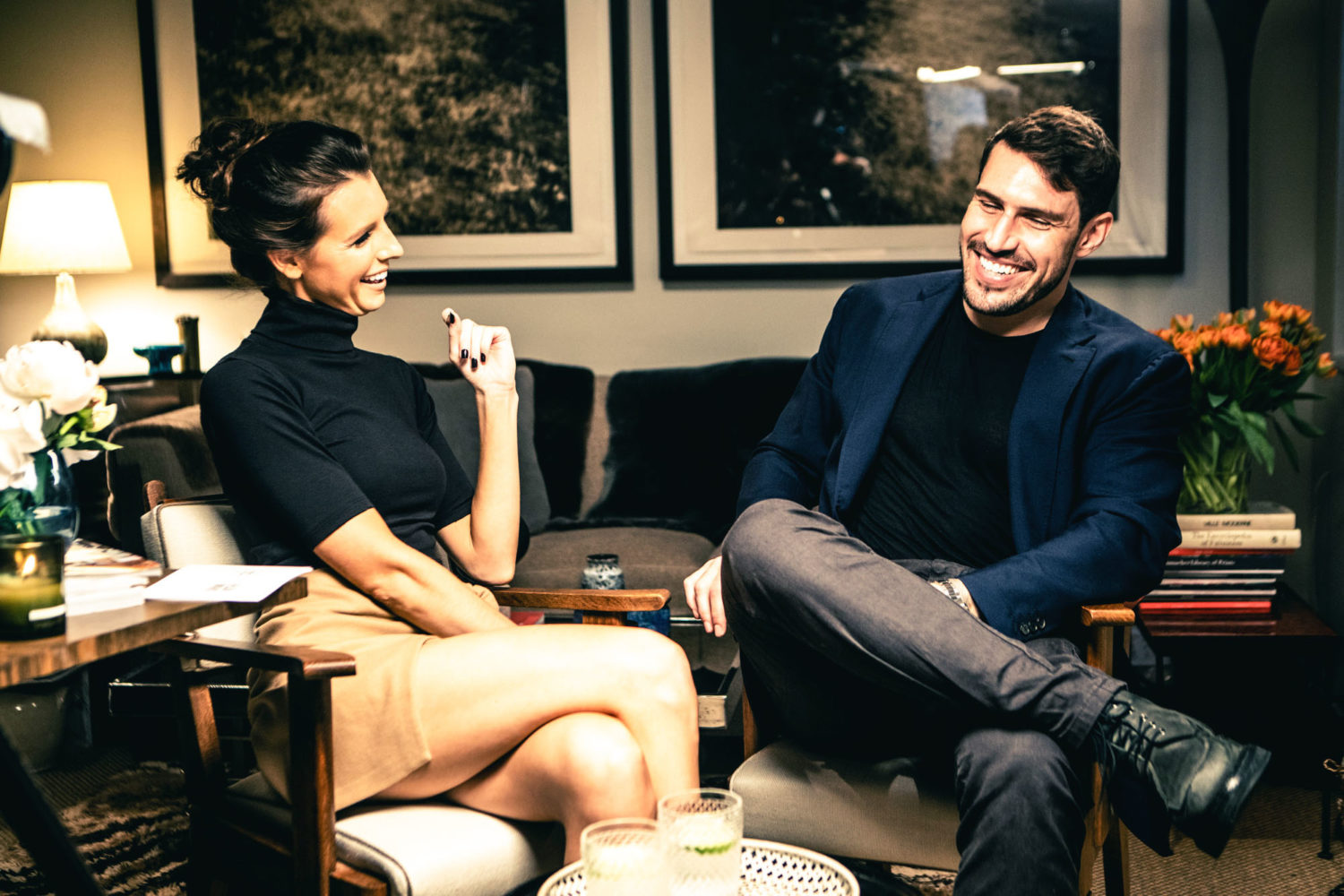
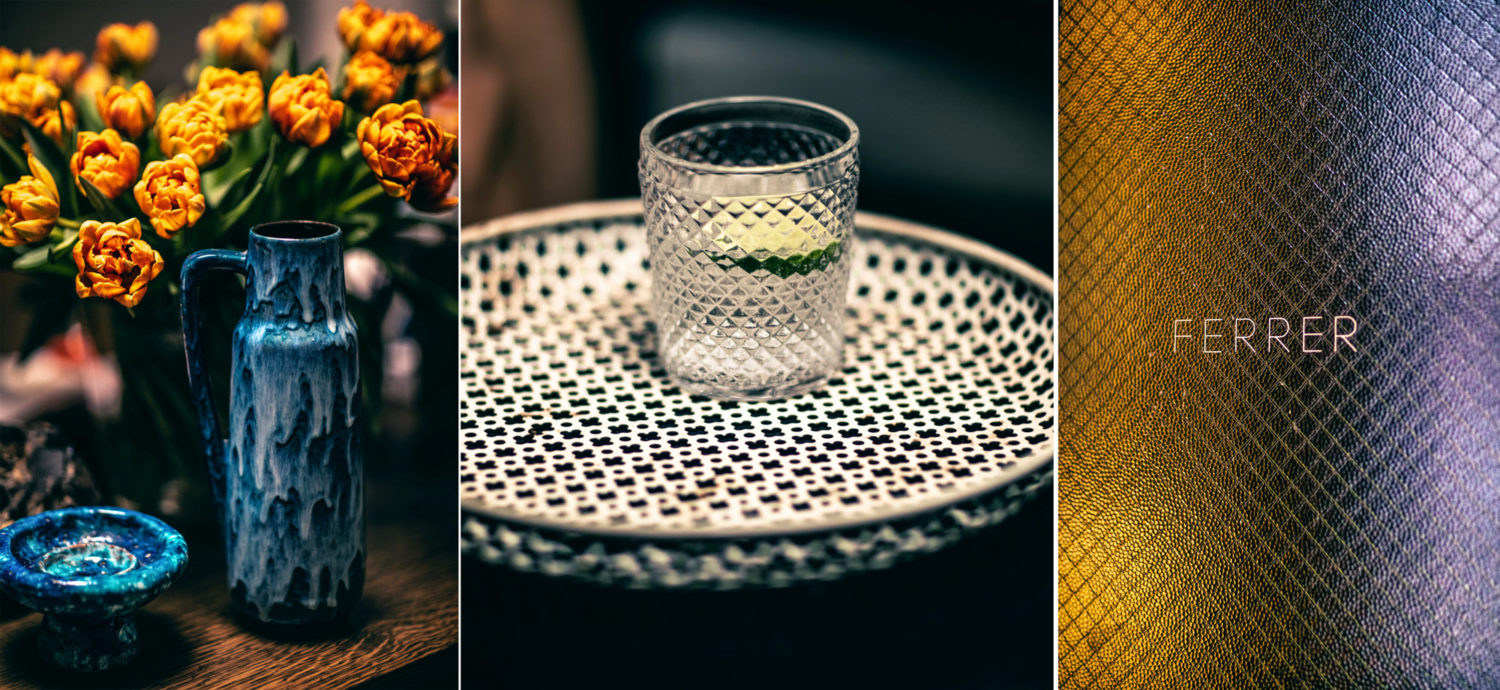
This partnership is the first-ever vintage collaboration CB2 has been a part of. How did it originate?
CB2 worked and collaborated a few times with a buddy of mine named Ross Cassidy who is a designer based in L.A. Ross and the company have maintained a great relationship and open dialogue around a number of things, and in a brainstorm session of sorts — or so I’m told — the idea of vintage popped up. It was something that got traction in the conversation internally and it was Ross who thought of me as somebody to help develop the idea, which is so sweet to have a friend and colleague vouch for you and put you up for something like this … I am a designer who uses vintage often, but at the same time I’m also a dealer. In the beginning, I was a dealer of new things but then my focus and fascination shifted into the vintage market. It’s only been about five years that I’ve been a dealer of vintage furniture and lighting.
What’s the key to incorporating vintage into modern or contemporary looks?
To have an open mind, to not be timid, to not be obsessed about scale, color, finish… because these vintage pieces are objects that hold their own, but they’re also objects that lend themselves to relationships with other objects. This is the whole idea from which my design philosophy springs. There is value in eclecticism, so just make it an interesting mix and it’s going to be special and it’s going to make you happy.
How do you look for quality when you’re vintage shopping?
Quality comes in a number of forms. You want to look for structural quality. You want a chair that has sturdy jointery and is not going to collapse from under you. I don’t like rickety, creaky furniture which can be associated with vintage, but that’s not what we’re about. You want to make sure the piece has structural integrity and then there’s a more subjective measure, like how beat up are you comfortable with? What’s your tolerance for patina? Some collectors want very little patina, they want things that are old to look pristine or almost be fully restored. For others, the more beat up the better. We established the line for the collection somewhere in the middle. Patina can be a measure of quality, condition and how close to original form it is. But inversely, really heavy patina pieces can be a marker of quality or uniqueness, too.
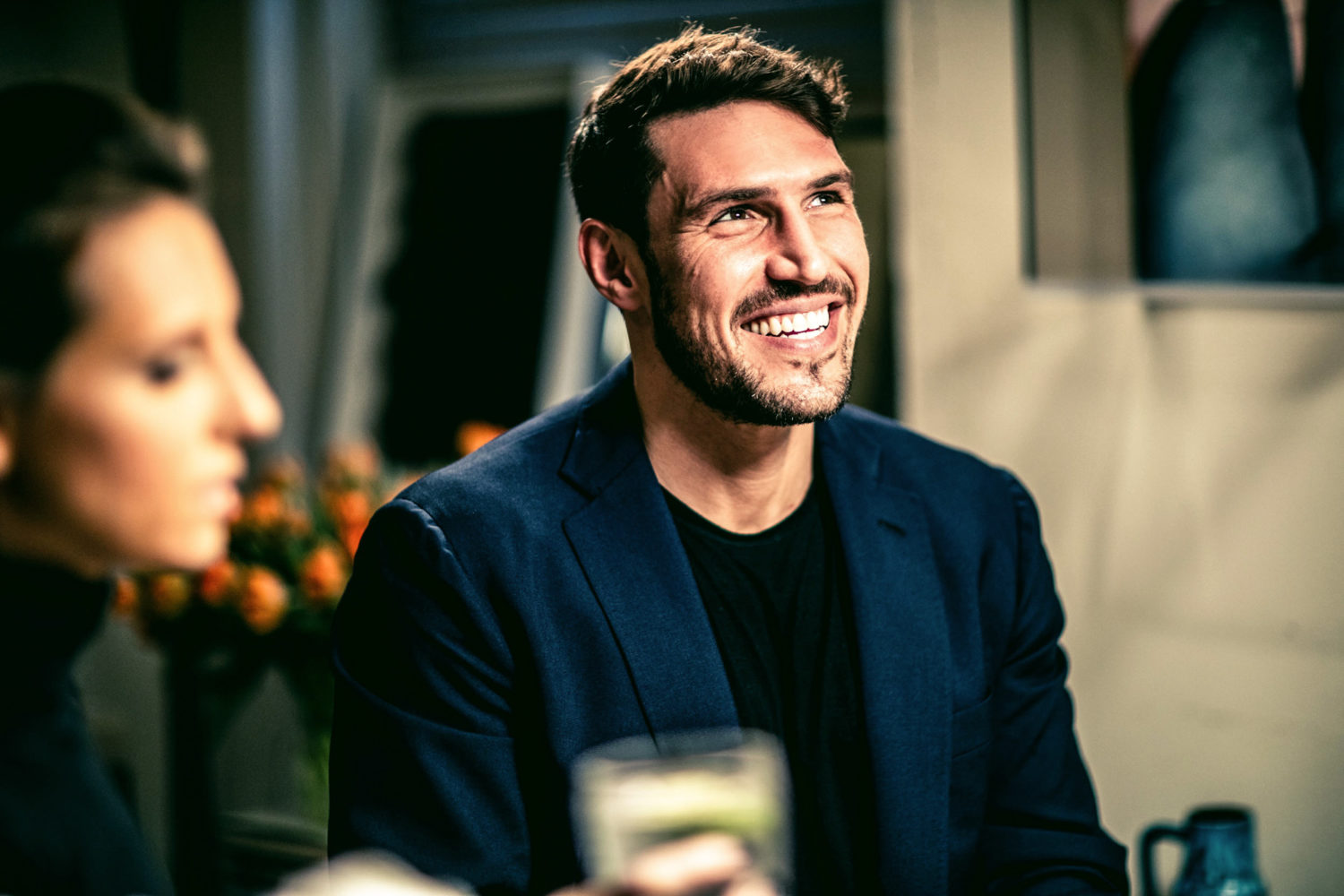
You’re right. Some things do look better worn in and it’s also a sign it’s been loved.
It’s nice to bring that history, that spirit into an environment that maybe otherwise is all new. There are many high-quality pieces in the production furniture world but I would suggest it’s best to augment the new with the old, take the edge off the new, warm it up, make it more human. There’s also the idea of reusing good, old things and not having just new, new, new.
Do you have a favorite piece in the collection? And how often do you want to keep something for yourself?
All the time. It’s like my biggest weakness. I’m a compulsive shopper and I accumulate quality but not always… you make mistakes. It’s funny, I have whole projects in my storage of things that I know make sense together that I saw and had to have … As far as the collection, there isn’t anything we’ve bought that I wouldn’t use for myself or a client of mine. So, in that way I love it all. I am partial to vintage lighting because it’s like functional sculpture in a way. So, there are some great pieces of lighting. There’s a pair of perforated metal columns that I really love. They nest within themselves and move up and down. They’re industrial but they’re modern.
How was the pressure of this project different than work you’ve done in the past?
The pressure in this little ecosystem of CB2, myself and our vendors hasn’t come from CB2 nor the vendors. It’s the pressure of trying to design a structure, a process and a system to accomplish our goals. There’s a lot of unknowns and as a team managing around that with a timeline in mind… I suppose time is the biggest pressure. A lot of moving parts. We’re talking about bringing things from disparate points in the world, consolidating them into a cohesive whole and then getting that to the U.S. and dispersing it to the respective stores.
What are some of the behind-the-scenes hurdles you had to overcome to bring this collection to life that consumers might not know about?
I don’t know how much I can share [laughs]. In a way we want to make it look like magic. We’re sourcing material from jurisdictions in Europe and importing that material into new jurisdictions in the U.S. and there’s a whole regulatory universe that needs to be accounted for. There are state laws, federal laws, all this stuff CB2 has had to navigate to make sure an authentic vintage piece lands in their customers’ shopping cart [while also making] sure it’s safe and compliant with all sorts of laws.
Why was CB2 the perfect partner for you and a collection like this?
I don’t like a lot of store-bought things, but I’ve always liked what CB2 does. There’s a sensibility that leans towards the modern within all that they do, and because of that it’s resonated with me. I often use pieces from their assortment, whether it’s glassware or a filing cabinet or a desk. They’ve been a resource for me as a designer in that way. I didn’t know much about them culturally as a corporation until I began conversations with them around this collaboration. They’re wonderful, human, kind and intelligent so it’s been an absolute pleasure. I think that ensures success, if everyone’s taking care of everybody else … There was a level of trust. They took a leap with me. I was vetted by a colleague but beyond my reputation they didn’t really know what they were dealing with.
We’re always inspired by people who are following their passion. At what point in your life did you realize you wanted to be in this industry?
I’ve [always loved this world]. I grew up in a world where design was present in a more traditional kind of classical way. I grew up in Connecticut and it always lit me up to see a beautifully designed room, beautifully executed curtains or paneling in a library or whatever, and I was aware of that sensitivity. But I didn’t know that that was my path probably until some point in Los Angeles after college. I thought, “Okay. I think I’m ready to be a decorator.” There was a lot of pressure — not from my parents but just from the culture that I grew up in — to be somebody in finance, the male who worked at a bank, made a lot of money, worked really hard and hired a decorator to do the house. But I want to be the one who does the house.
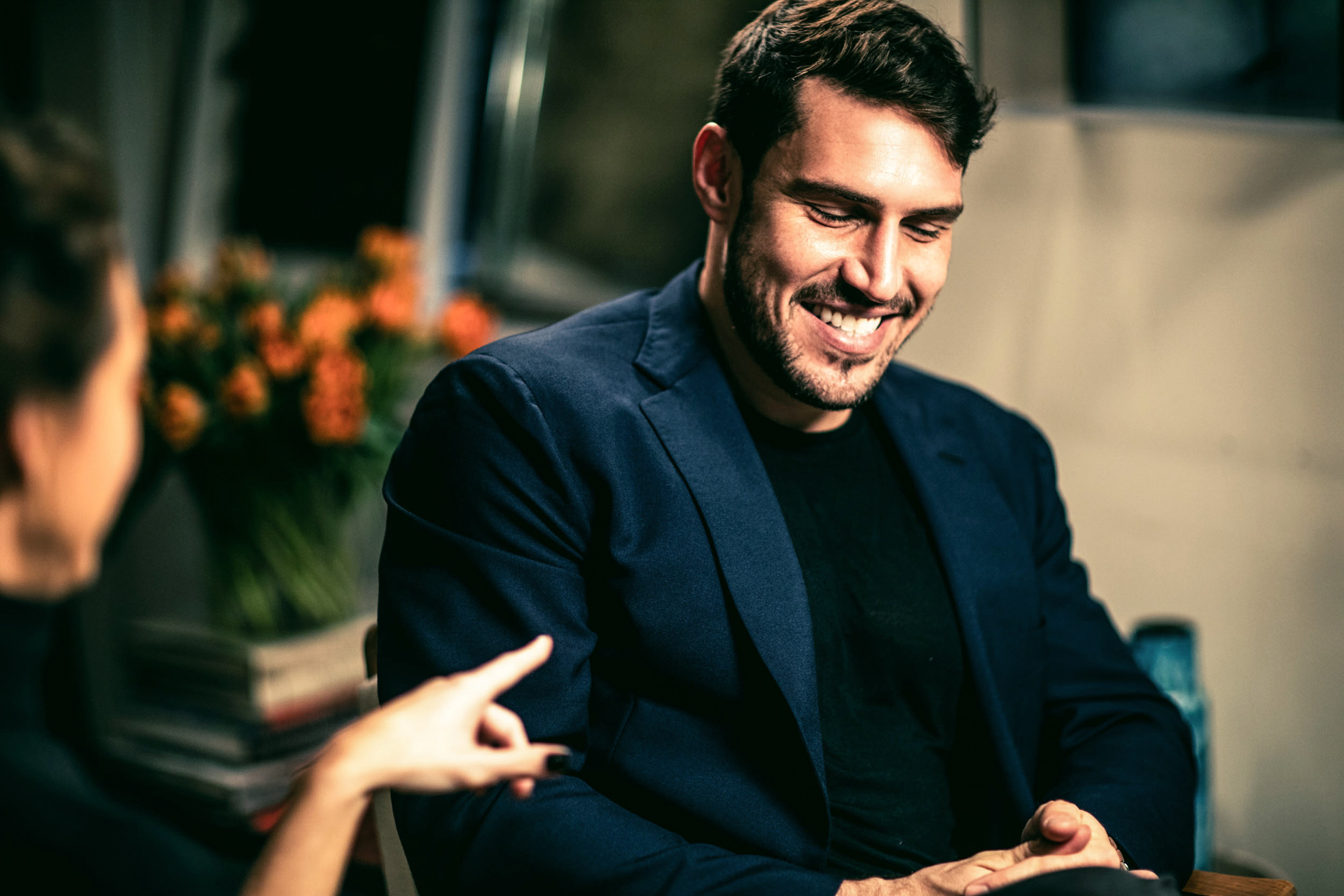
How did you get your start?
It was a time when there were very few jobs in the market in 2008, it was a bunch of false starts working for different designers and a gallerist in L.A. Ultimately, I started a company there. We made modernist furniture. That was an amazing experience learning how to make things, finish things, how to celebrate materials and how to speak to a customer about collectible design, but it still wasn’t exactly what I wanted to be doing. I wanted to create the environment, I wanted to do the whole thing and so it was when I moved to New York that I pivoted in that way and began doing apartments, homes and full-scale interior design.
Did you ever feel like giving up along the way?
Once I was clear on what I wanted there was no plan b but there were major moments of frustration. Like in any industry, there is an inherent amount of complication and failure built into the process, so when something goes wrong you have to learn to adapt and work around it. Sometimes there are happy accidents when something goes wrong and it actually yields a better outcome than it would otherwise. That’s important to remember even as a consumer shopping our vintage collection… you may not be sure it’s the right piece for you, but if you love it just buy it. It’s going to find a home in your home.
What would you tell someone who is aspiring to have a career in interior design?
I would encourage them to reach out to a designer and talk about their experience, how they got there, why they love it, why they may not love it and what they think is required to be successful in the design field. It’s something that I did later on.
Who were your mentors along the way?
In L.A. there was a guy named Timothy Corrigan who is quite successful. He does a lot of more historical-inspired design, but a lovely man with a lot of work and a great client following. He was an ad executive — a completely different career — and changed [career paths] in his 40s, so that was a great example.
What advice really stuck with you?
That you can really co-create your reality. You decide you want to be a designer. If you’re smart, committed and resourceful enough, you’ll figure it out. I have no formal training, so Timothy inspired me to go for it. Along that path I met a designer named Robert Stilin who became my de facto mentor and taught me a lot of the skills that I had lacked up until that point. Robert’s aesthetic is definitely one that I’ve absorbed into my own. It’s important to find a mentor and develop a relationship. The design world is actually a lot more permeable and friendly than people might imagine. I get kids who call me pretty regularly and I make time for coffee or have them in. I think it’s symbiotic. It’s great to understand where they’re coming from, what inspires them, what skills they’ve acquired on their own and guide them how to move forward. It’s not a straightforward industry. Education — when and to what extent that’s applicable — that’s a big question mark. It really depends. There are facets to the industry and it’s a changing industry like so many.

Where do you go for inspiration?
I just like to move around. My therapist will say that I’m in flight — literally and in other ways — but with purpose in my defense. Just like I’m recommending young people talk to designers they want to emulate, I’ll talk to a gallerist, another designer that’s further along than me and dealers and try to figure out how their story is applicable to my own. The more things you see, the more you hone your eye and the better able you are to create something unique. It’s really about teaching the eye. That can mean walking art fairs, flea markets, museums, gallery exhibitions and visiting artists and seeing how they make things … It’s an organic process of discovery. One place in particular I like for that is the flea market in Paris. It’s one of my favorite places in this world. It is fabulous.
I’d imagine you’re evolving with every project. What is something you learned from working with the CB2 team?
This project has taught me you can accomplish something from nothing when you have committed partners. I would never have dreamt I would be doing this until I got this phone call and I had it in my mind and thought, “Okay, this is what these guys want. How can I assist them in doing this?” I was in Berlin at the time and I thought, “I’m going to pop into this dealer that I work with here and run this idea by him to see if he’d be amenable to being part of it.” And he was! He was totally into it and that got me excited. My mind began pattern sorting for a pathway toward what CB2 had asked for. It all came together. It’s about a positive attitude, a can-do attitude, a willing to pick up the phone and ask people to get involved. This can be applied in so many different industries and businesses. I do like a collaborative spirit and I feel like this project is a manifestation of that.
How would you describe the collection in just a few words?
Eclectic, funky and not too serious … My key word in describing the design that I do is eclecticism. I think that’s embodied in the collection. I think the collection is serious, it is a survey of historical design of Italian, French, Scandinavian, German and other origins beginning in the 30s, 40s, into the 50s, 60s and 70s. That’s the academic lens but it’s also playful. There’s a lot of funkiness in it and I think that’s what sets it apart. It’s not rigid.
If you could have a drink with anyone, who would it be?
I’m going to say Gio Ponti who’s kind of part of this cannon of mid-century design. This is a guy who made a life of collaborations, a life of interdisciplinary work. He trained as an architect, he created incredible furniture that ranged from the highly decorative to the highly modernist industrial and he designed buildings. He really was a prolific genius. He was the editor and founder of a design journal. If there are design geniuses — which there have been — Ponti is one of them and that would be a pretty cool drink. Also, Italians are a lot of fun just to sit down with and laugh.
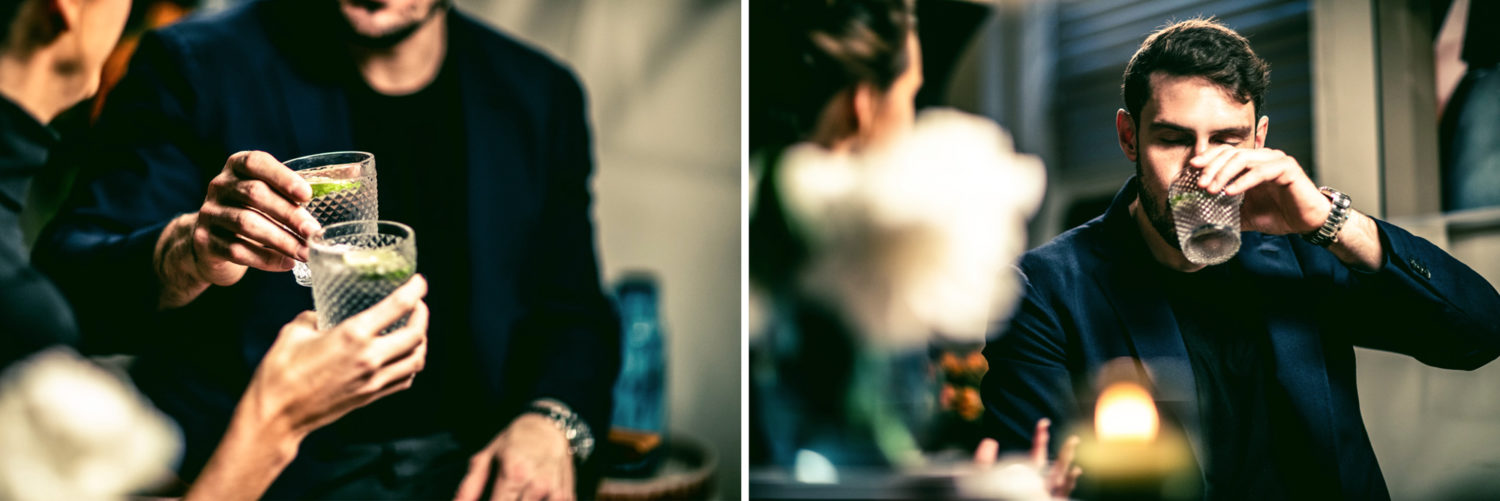
Visit CB2 to view the collection.
This interview has been edited and condensed for clarity.
Did you enjoy this feature? Subscribe to our newsletter and never miss a drink, we promise we’ll never spam you!

